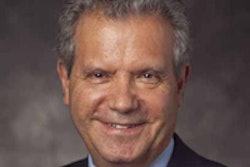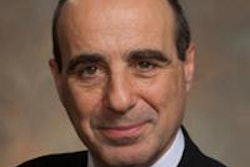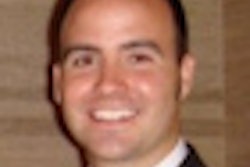
SAN FRANCISCO - Higher taxes, lower reimbursement, and more federal control over the use of advanced imaging in clinical practice. Dr. Frank J. Lexa of Drexel University in Philadelphia used these terms to describe a dark vision of postreform radiology at the joint 2012 California Radiological Society annual meeting and American College of Radiology (ACR) Leadership Summit.
Lexa said the Patient Protection and Affordable Health Care Act (PPACA) will produce winners and losers among the nation's 30,000 board-certified radiologists, a point echoed by other speakers at the meeting, which was also produced by the American College of Radiology's Radiology Leadership Institute (RLI).
 Dr. Frank J. Lexa.
Dr. Frank J. Lexa.
Entrepreneurial radiologists are best suited to capitalize on opportunities that impending changes will present, Lexa said. But he adds they will face major challenges to their wealth and professional influence while an encyclopedic array of regulations associated with the law are implemented.
"We are going to get healthcare reform in one form or another," he advised the audience. "Our job is to manage those issues to come up with scenarios that are more compelling and more relevant to what we do in radiology."
Lexa expressed doubt that key provisions of the PPACA will be reversed, even if Republican presidential candidate Mitt Romney wins the White House in November. Romney has promised to kill Obamacare as his first act as chief executive.
The law is still unpopular among most Americans but they understand the country needs a solution to the high cost and unequal access to healthcare, Lexa said. Healthcare accounted for 18.2% of the U.S. gross domestic product in 2011. An estimated 30 million U.S. residents were uninsured last year.
"Most people may think [Obamacare] is stupid. They may hate it, but don't take it away from them because they want something there in case they need it," he said.
On his website, Romney promised alternatives to Obamacare. General themes include increased state autonomy over Medicaid, practice caps, and cross-state insurance purchasing.
If Obamacare survives, physicians can expect to lose income and see their income taxes rise as the federal government looks to generate $700 billion in revenue or savings over 10 years from Medicare to expand access, Lexa said. Radiologists and other subspecialty physicians will shoulder a disproportionate share of the probable cuts.
Numerous provisions in the new law shift power away from specialty physicians, such as radiologists, to primary care and family physicians, Lexa said.
Prejudices against radiologists can be been seen in Obamacare's emphasis on comparative effectiveness research, which disproportionately singles out new imaging applications, Lexa said. Half of the 100 comparative effectiveness projects recommended by the U.S. Institute of Medicine involve randomized controlled trials, literature reviews, prospective registries, or cohort studies, he said.
Accountable care organizations (ACOs) will also be an important part of the mix. ACOs can involve dozens of hospitals and many more physician groups and clinical services to provide comprehensive care for millions of people in a specified geographic region.
Cost savings derived from such vertical integration are to be shared by the healthcare organization and the U.S. Center for Medicare and Medicaid Services. The concept assigns to the ACO the risk and responsibility for Medicare beneficiaries. Objectives combine cost and quality targets.
The federal government has already implemented multiple demonstration projects relating to ACO structure and operation, Lexa noted. The first began in January 2012, with contracts with Medicare covering three years and involving at least 5,000 beneficiaries. Some ACO arrangements are based on a fee-for-service reimbursement model. Others are capitated.
Many operational details concerning ACOs have yet to be worked out, Lexa said. The relationship between physicians and ACOs can involve traditional contracts, joint ventures, or direct employment.
Lexa predicted radiologists will have to do more than read films to succeed in an ACO setting. He said radiologists will be involved in deciding the circumstances under which specific classes of patients receive medical imaging. Service metrics will gain increased prominence, along with process analysis and cost improvement. ACOs can expect much more government and public involvement and oversight than conventional hospitals and clinics.
He advised radiologists to remain attentive to ACOs locally, and to be prepared to eventually work for or provide services to them. Bridge-building to primary care physicians is advisable.
Though some aspects of participating in ACOs will be onerous, others will still allow physicians to fulfill their oath to make the health of their patients their first consideration.
"An ACO radiologist will have the opportunity to be that kind of physician," Lexa said.



















